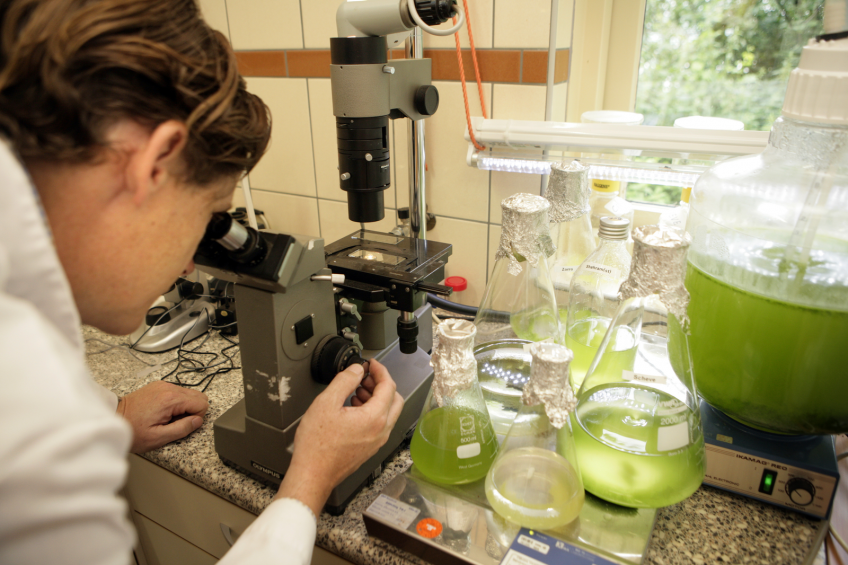Improve broiler bone strength through nutrition

The incidence of leg weakness and broken bones is a serious problem in the poultry industry worldwide and causes huge economic loss each year. Modern broilers grow three to four times faster than previous generations. How can producers ensure that birds develop adequate bone strength through nutrition?
Inappropriate nutrition, management, and environmental factors can have an impact on bone strength and quality. Today, leg disorders such as angular bone deformities and Tibial Dyschondroplasia have become common in broilers attributing to poor growth, high mortality rates and increased carcass condemnation and downgrading at slaughter. It is estimated that up to 2% of broiler flocks are lost due to lameness, costing the industry approximately $4 billion globally. In addition, 6% of broilers develop skeletal abnormalities such as Osteoporosis.
Osteoporosis in laying hens is a condition that involves the progressive loss of structural bone during the laying period. This bone loss results in increased bone fragility and susceptibility to fracture, with fracture incidences of up to 30% over the laying period and depopulation not uncommon under commercial conditions. Besides the ischium, humerus and furculum, the keel bone also has the highest fracture incidence, particularly in free range systems with approximately 60 – 80% of laying hens suffering from keel bone breakage. This has become a chief welfare issue facing the egg production industry in Europe and many other areas.
New insights
Bone is made up of two components: the organic matrix and the inorganic matrix. A fibrous protein called collagen is the main component of the organic matrix, while crystals of calcium phosphate make up the bulk of the inorganic matrix. The overall bone strength is determined by how each component makes up the entire structure. Because of these basic understandings of bone tissue make up, researchers have conventionally focused on minerals such as calcium and phosphorus and vitamins such as vitamin D in the past decades to improve bone strength in poultry. In recent studies, research scientists have taken a new approach in assessing the effect of fatty acids on bone strength.
Two studies were conducted in the poultry research laboratory of Alltech University of Kentucky Nutrition Research Alliance. The results clearly demonstrated that dietary supplementation of dehydrated whole cell microalgae, All-G Rich, previously termed ‘Alltech SP1’ that contains 64% fat and 16% DHA significantly increased bone strength of growing chicks.
In study one, a total of 384 Hy-Line W-36 pullets with eight replicate groups of sixteen chicks were used. Dietary treatments consisted of feeding a corn-soybean meal control diet alone or supplemented with 1.0 or 2.0% microalgae. The treatment diets were fed at day 1 after hatch. Bone samples including tibia and humerus were taken at weeks 10 and 17 respectively from one bird per pen. Bone breaking strength was tested using an Instron Testing Machine. The breaking strength of tibia bone sampled at week 10 and humerus bone sampled at week 17 increased significantly by dietary supplementation of microalgae (Figure 1).
Figure 1 – Effects of dietary microalgae on bone strength of white pullets.

Study two used Cobb 500 broiler chicks with 10 replicates of 23 chicks. Dietary treatments included a corn-soybean meal control diet without supplementation of microalgae or supplemented with 0.5, 1.0 or 2.0% microalgae. At day 19 bone samples were collected from one chick per pen for the analysis of bone breaking strength. Humerus breaking strength of chicks fed diets containing 1 to 2% microalgae was significantly higher than that of chicks fed diets containing no or 0.5% microalgae (Figure 2). These results may provide new insights into novel approaches to further improve bone strength.
Figure 2 – Effects of dietary microalgae on bone strength of broiler chicks.

Still some unknowns
Although lipids may play an important role in bone health, it is currently unknown how fatty acids like DHA affect skeletal and bone development. Some researchers suggest that it may be related to certain factors inside the cell, which regulate bone development. One such factor is prostaglandin E2 (PGE2), which is made from a type of long-chain fatty acid called arachidonic acid (AA) produced by the bone-making cells. Previous research has shown that low levels of PGE2 are favourable for bone growth, while high PGE2 levels can have the opposite effect. Based on these results, it is possible that the presence of DHA may decrease the levels of AA by altering the overall composition of fatty acids in the bone tissue. This effect keeps levels of PGE2 optimal for bone growth. Other research data indicated a possible link between inflammatory response and weak bones. The excessive production of cytokines in bone due to inflammatory response could interrupt normal bone metabolism and was closely associated with bone loss. It has been indicated that (n-3) fatty acids such as DHA can suppress inflammation by decreasing the production of pro-inflammatory cytokines.
Having weak bones is a very common disease, not only for poultry and animal production but also in humans. Studies suggest that approximately one in two women and up to one in four men aged 50 and older will break a bone due to bone weakness. Osteoporosis is responsible for approximately $19 billion in human health related costs every year. Based on the results from these poultry studies, essential fatty acid DHA may be another key factor, among many other known factors, to prevent the development of osteoporosis in humans and animals.













